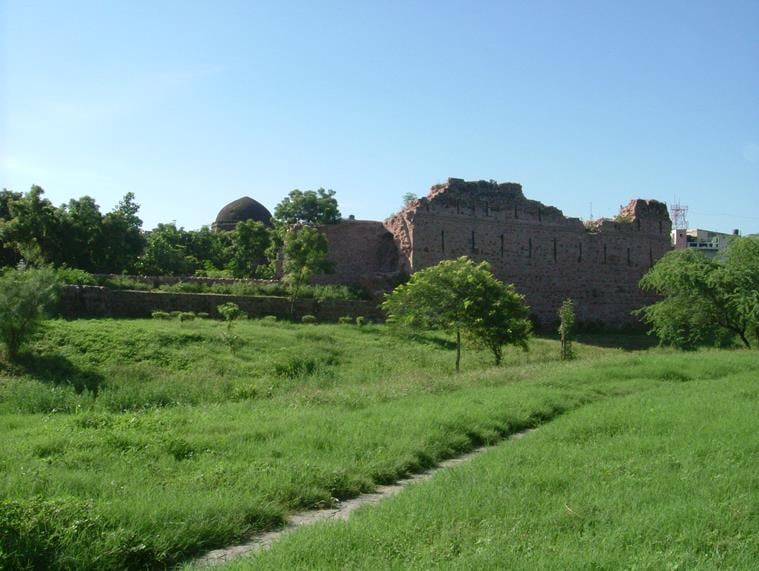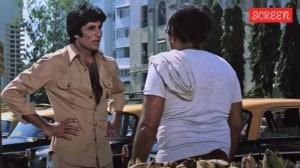Siri Fort: How a Khilji-era bastion against Mongol invaders became synonymous with 1982 Asian Games
Located in the heart of the capital, Siri is the second among the seven cities of Delhi and the first to be built by a Muslim ruler — Alauddin Khilji.
 Located in the heart of the capital, Siri is the second among the seven cities of Delhi and the first to be built by a Muslim ruler — Alauddin Khilji. Abhinav Saha
Located in the heart of the capital, Siri is the second among the seven cities of Delhi and the first to be built by a Muslim ruler — Alauddin Khilji. Abhinav Saha Dotted by historical ruins, nothing about Siri Fort now betrays that it was once a bastion of the Delhi Sultanate to defend the city from the onslaught of the Mongols.
Located in the heart of the capital, Siri is the second among the seven cities of Delhi and the first to be built by a Muslim ruler — Alauddin Khilji.
“Siri Fort stands among the numerous monuments and palaces which Ala-ud-din had constructed. Built in 1311 AD, the fort served as a seat of Ala-ud-din’s administration. Among a host of administrative buildings and palaces, the construction, which deserves most credit was the Hazar Sutun, a magnificent palace comprising one thousand pillars. Housed within Siri, was Hauz-e-Alai, a marvellous reservoir…” writes Rajiv Tiwari in his book Delhi: A Travel Guide.
 The fort of Siri, built by Alauddin Khilji in 1290, now lies shrouded under a thick foliage of trees and a blanket of apartments. (Express archive)
The fort of Siri, built by Alauddin Khilji in 1290, now lies shrouded under a thick foliage of trees and a blanket of apartments. (Express archive)
According to the book, when Khilji ascended the throne in 1296 AD, he found his empire the target of foreign attacks and thus, Siri was constructed with the motive to fortify his kingdom. Tiwari further writes: “The fort was indeed a solid, stable construction which succeeded in guarding its royal residents from any external disturbance. Although the Fort stands in ruins today, one can decipher from the relics how strong and well equipped it had been in the past.”
According to a legend, the place acquired the name as the heads (sirr in Hindustani) of hundreds of Mongol soldiers were buried here. Author Rana Safvi, however, debunks the belief. Speaking to The Indian Express, she says: “According to Sir Syed Ahmad Khan’s Asar-us-Sanadid, the name Siri is after the village (in the area).”
Sir Gordon Risley writes in his book The Seven Cities of Delhi: “Inside this city there was a Palace of a Thousand Pillars, but this also has gone, and the only monument connected with the city which now exists is the Hauz Khas of Ala-ud-din, seldom visited, and worthy of no special mention.”
The glory of Siri at its prime has also been acknowledged by Timurlane — the Mongol ruler who invaded Delhi in the 14th century. He writes in his memoirs: “Siri is around the city. Its buildings are lofty. They are surrounded by fortifications built of stone and brick, and they are very strong — from the fort of Siri to that of Old Delhi, which is a considerable distance — there runs a strong wall built of stone and cement… The fortifications of the three cities (old Delhi, Siri and Tughlakabad) have thirty gates. Jahanpanah has thirteen gates, Siri has seven gates.”
Strong as they may have been, the ramparts of the fort failed to guard it against multiple attacks by the Mongols.
Writes A L Srivastava in the The Sultanate of Delhi: “The fourth important Mongol invasion occurred at a time when the Sultan was occupied in the siege of Chittor…Ala-ud-din was obliged to take shelter in the fortress of Siri where he (was) besieged for two months. The Mongols plundered the surrounding country and carried their raids even into the streets of Delhi.”
According to Anurit Verma’s book Forts of India, Siri had practically lost all its glory until the Asian Games gave it a new lease of life in 1982. “The residential quarters built for foreign participants in the Asian Games at Siri have familiarised them with the name of Siri; and to those interested in history with its glorious past,” Verma writes in his book.












